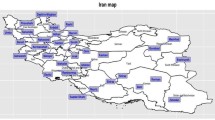Abstract
Cannabis sativa is the most frequently used of all illicit drugs in the USA. Cannabis has been used throughout history for its stems in the production of hemp fiber, seed for oil and food, and buds and leaves as a psychoactive drug. Short tandem repeats (STRs) were chosen as molecular markers owing to their distinct advantages over other genetic methods. STRs are codominant, can be standardized such that reproducibility between laboratories can be easily achieved, have a high discrimination power, and can be multiplexed. In this study, six STR markers previously described for C. sativa were multiplexed into one reaction. The multiplex reaction was able to individualize 98 cannabis samples (14 hemp and 84 marijuana, authenticated as originating from 33 of the 50 states of the USA) and detect 29 alleles averaging 4.8 alleles per loci. The data did not relate the samples from the same state to each other. This is the first study to report a single-reaction sixplex and apply it to the analysis of almost 100 cannabis samples of known geographic origin.




Similar content being viewed by others
References
Amera-Chem (2008) Drug identification bible. Amera-Chem, Grand Junction
Clarke RC (1981) Marijuana botany. Ronin, Berkeley
American Medical Association (1997) Report of the Council on Scientific Affairs to AMA House of Delegates on medical marijuana. CSA report I-97. American Medical Association, Chicago
ElSohly MA, Slade D (2005) Life Sci 78:539–548
Morgante M, Rafalski A, Biddle P, Tingey S, Olivieri AM (1994) Genome 37:763–769
Weising K, Nybom H, Wolff K, Meyer W (1995) DNA fingerprinting in plants and fungi. CRC, Boca Raton
Ayres NM, McClung AM, Larkin PD, Bligh HFJ, Jones CA, Park WD (1997) Theor Appl Genet 94:773–781
Ashkenazi V, Chani E, Lavi U, Levy D, Hillel J, Veilleux RE (2001) Genome 44:50–62
Saiki RK, Scharf S, Faloona F, Mullis BK, Horn GT, Erlich HA, Arnheim N (1985) Science 230:1350–1354
Butler JM (2005) Forensic DNA typing: biology and technology behind STR markers, 2nd edn. Elsevier, Burlington
Edwards A, Civitello A, Hammond HA, Caskey CT (1991) Am J Hum Genet 49:746–756
Litt M, Luty JA (1989) Am J Hum Genet 44:397–401
Jacob HJ, Lindpaintner K, Lincoln SE, Kusumi K, Bunker RK, Mao YP, Ganten D, Dzau VJ, Lander ES (1991) Cell 67:213–224
Weber JL, May PE (1989) Am J Hum Genet 44:388–396
Wang Z, Weber JL, Zhong G, Tanksley SD (1994) Theor Appl Genet 88:1–6
Morgante M, Olivieri AM (1993) Plant J 3:175–182
Powell W, Morgante M, Andre C, Hanafey M, Vogel J, Tingey S, Rafalski A (1996) Mol Breed 2:225–238
Powell W, Machray GC, Provan J (1996) Trends Plant Sci 1:215–222
Jones CJ, Edwards KJ, Castaglione S, Windield MO, Sala F, Van De Wiel C, Bredemeijer G, Vosman B, Mathes M, Daly A, Brettschneider R, Bettini P, Buiatti M, Maestri E, Malcevschi A, Marmiroli N, Aert R, Volckaert G, Rueda J, Linacero R, Vasquez A, Karp A (1997) Mol Breed 3:381–390
Goldstein DB, Linares AR, Cavalli-Sforza LL, Feldman MW (1995) Genetics 139:463–471
Shirota O, Watanabe A, Yamazaki M, Saito K, Shibano K, Sekita S, Satake M (1998) Nat Med 52:160–166
Gillan R, Cole MD, Linacre A, Thorpe JW, Watson ND (1995) Sci Justice 35:169–177
Faeti V, Mandolino G, Ranalli P (1996) Plant Breed 115:367–370
Jagadish V, Robertson J, Gibbs A (1996) Forensic Sci Int 79:113–121
Siniscalco G, Di Finizo A, Caputo P, Cozzolino S (1998) Delpinoa 37:35
Forapani S, Carboni A, Paoletti C, Moliterni CVM, Ranalli P, Mandolino G (2001) Crop Sci 41:1682–1689
Hakki EE, Uz E, Sag A, Atasoy S, Akkaya MS (2003) Forensic Sci Int 136:31
Hakki EE, Kayis SA, Pinarkara E, Sag A (2007) Electron J Biotechnol 10:570–581
Coyle HM, Ladd C, Palmbach T, Lee HC (2001) Croat Med J 42:340–345
Datwyler SL, Weiblen GD (2006) J Forensic Sci 51:371–375
Gilmore S, Peakall R (2003) Mol Ecol 3:105–117
Gilmore S, Peakall R, Robertson J (2003) Forensic Sci Int 131:65–74
Hsieh HM, Hou RJ, Tasi LC, Wei CS, Liy SW, Huang LH, Kuo YC, Linacre A, Lee JCI (2003) Forensic Sci Int 131:53–58
Alghanim HJ, Almirall JR (2003) Anal Bioanal Chem 376:1225–1233
Howard C, Gilmore S, Robertson J (2008) J Forensic Sci 53:1–7
Vallone PM, Butler JM (2004) Biotechniques 37:226–231
Kalinowski ST (2006) Mol Ecol 6:974–979
Clarke KR, Gorley RN (2006) PRIMER v6: user manual/tutorial. PRIMER-E, Plymouth
Morgante M, Rafalski A, Biddle P, Tingey S, Olivieri AM (1994) Genome 37:763–769
Paetkau D, Calvert W, Stirling I, Strobeck C (1995) Mol Ecol 4:347–354
Peakall R, Smouse PE (2006) Mol Ecol 6:288–295
Stephan W, Wiehe T, Lenz MW (1992) Theor Popul Biol 41:237–254
Slatkin M (1995) Mol Biol Evol 12:473–480
Bernardo R (2002) Breeding for quantitative traits in plants. Stemma, Woodburry
Wiehe T (1998) Theor Popul Biol 53:272–283
Acknowledgements
We would like to thank the University of Mississippi, National Center for Natural Product Research with special thanks to Zlatko Mehmadic and Tariq Mahmood of the Alberta Research Council in Alberta, Canada, for the donation of the hemp DNA. The Forensic DNA Profiling Facility at Florida International University and Bruce McCord are also acknowledged. The Kauffman Foundation, the Minority Biomedical Research Support Research Initiative for Scientific Enhancement (MBRS RISE), and National Institute of Drug Abuse (NIDA) are also acknowledged.
Author information
Authors and Affiliations
Corresponding author
Electronic supplementary material
Below is the link to the electronic supplementary material
ESM 1
(PDF 35.1 KB)
Rights and permissions
About this article
Cite this article
Mendoza, M.A., Mills, D.K., Lata, H. et al. Genetic individualization of Cannabis sativa by a short tandem repeat multiplex system. Anal Bioanal Chem 393, 719–726 (2009). https://doi.org/10.1007/s00216-008-2500-3
Received:
Revised:
Accepted:
Published:
Issue Date:
DOI: https://doi.org/10.1007/s00216-008-2500-3




